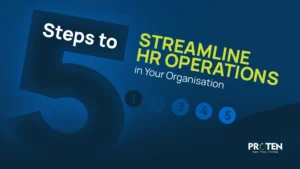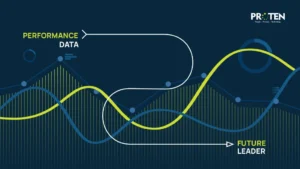Throughout history, the question of bias in judgment has been a central theme in countless stories and events. In today’s workplaces, performance reviews hold immense weight, impacting your career growth, compensation, and even job security.
However, these evaluations can be vulnerable to a silent enemy: performance management bias. Unconscious biases, deeply ingrained in our thought processes, can distort our perception of an employee’s performance, leading to unfair and inaccurate assessments.
Imagine judging an employee solely based on a recent mistake, ignoring their consistent track record of success. The consequences of bias in performance reviews are far-reaching.
Disadvantaged employees feel demoralized and undervalued, leading to decreased motivation and ultimately, a stagnant workforce. And you suffer as well, missing out on the full potential of your employees and hindering your ability to attract and retain top talent.
So how do you avoid performance management bias issue? Let’s explore together in the few minutes.
Understanding Performance Management Bias
Performance reviews are intended to be a cornerstone of employee development. They offer a valuable opportunity to assess progress, identify strengths and weaknesses, and set goals for future growth.
However, a hidden web of biases can distort these evaluations, turning them from a tool for empowerment into a source of frustration and unfairness. Performance management bias refers to the unconscious prejudices that can influence how we perceive and evaluate an employee’s performance.
These biases are often deeply ingrained in our thought processes, stemming from factors like personal experiences, cultural background, and even our own self-perception. Unlike blatant discrimination, bias operates subtly, often without our conscious awareness.
The negative effects of bias in performance reviews are far-reaching. For employees, biased evaluations can be incredibly demoralizing. Imagine a talented and dedicated individual consistently overlooked for promotions or raises due to an unconscious bias on your part.
This can lead to feelings of frustration, disengagement, and ultimately, a desire to seek opportunities elsewhere. Furthermore, a culture of biased performance management creates a ripple effect that impacts the entire organization. When talented employees are overlooked or undervalued, the organization loses out on their full potential. Innovation stagnates, morale plummets and the ability to attract and retain top talent suffers.
The cost of bias extends beyond just employee morale.
Unfair performance evaluations can lead to legal issues if your employees feel they are being discriminated against. And yes, your employees can sue you for discrimination. Additionally, biased reviews create an environment of distrust and resentment, hindering collaboration and teamwork, essential ingredients for any successful organization.
In essence, performance management bias is a silent thief, stealing opportunities from both you and your employees and hindering the overall success of the organization. By understanding its various forms and insidious effects, we can begin to dismantle this web of bias and create a system of fair and objective performance management.
Strategies To Mitigate Performance Management Bias
The insidious nature of performance management bias makes it a challenging opponent. However, by implementing a multi-pronged approach, organizations can create a more objective and fair evaluation system. Here are some key strategies to mitigate bias:
I. Embracing Objective Metrics:
Shift the focus from subjective opinions to clear, measurable criteria. Develop SMART goals (Specific, Measurable, Achievable, Relevant, Time-bound) that outline performance expectations and track progress with concrete data. This data-driven approach reduces the influence of personal biases and provides a more accurate picture of employee performance.
II. The Power of Frequent Feedback:
Ditch the annual review model and embrace a culture of ongoing feedback. Regular check-ins allow for a more holistic assessment, capturing consistent performance throughout the year rather than relying solely on recent events (recency bias). These conversations also provide opportunities to address concerns and offer guidance in real time, fostering a more collaborative and supportive work environment.
III. Diversity in Evaluation:
Expand your evaluation circle beyond a single manager. Consider incorporating peer reviews or 360-degree feedback, which gathers input from colleagues, supervisors, and even clients. This multi-perspective approach helps to mitigate individual biases and provides a more well-rounded evaluation of an employee’s contributions.
IV. Unmasking the Unconscious:
Invest in unconscious bias training for managers and leadership. These educational programs raise awareness about the different forms of bias and equip individuals with strategies to identify and overcome them in their own decision-making processes.
V. The Power of Calibration:
Regularly convene calibration sessions where managers can discuss and compare their evaluations of similar roles. This collaborative approach helps to identify inconsistencies in scoring and ensure that everyone is applying the same criteria for performance assessment.
VI. Employee Self-Assessment:
Let your employees take ownership of their professional development by incorporating a self-assessment component into the evaluation process. This allows them to reflect on their accomplishments, identify areas for improvement, and set goals for the future. By giving employees a voice in the process, you can gain valuable insights and reduce the risk of overlooking their contributions.
These strategies aren’t something you can implement at once. You’re not a Spartan. You can only implement them by continuous effort. By doing so, you can dismantle the web of bias and create a system of performance management that truly empowers your employees and drives organizational success.
Building A Bias-free performance Management Culture
Mitigating bias requires more than just implementing specific strategies. It necessitates a cultural shift within your organization, fostering an environment where fairness and transparency reign supreme. Here’s how to cultivate a bias-free performance management culture:
1. Leadership by Example:
Leaders set the tone for the entire organization. When leadership demonstrates a commitment to fair and objective performance management, it sends a powerful message to all employees. This includes actively participating in bias training, promoting open communication, and holding themselves accountable for unbiased decision-making.
2. Open Communication and Trust:
Building an environment where employees feel comfortable voicing concerns is crucial. Encourage open communication around performance expectations, feedback, and potential biases. Regularly solicit employee feedback on the performance management process itself, allowing them to identify areas for improvement. This fosters trust and strengthens the foundation for a truly fair system.
3. Celebrating Diversity:
Embrace the diverse perspectives and experiences your employees bring to the table. Go beyond just tolerating differences – actively promote and celebrate diversity in leadership positions and across evaluation teams. This diverse representation helps mitigate bias in decision-making and ensures a more comprehensive understanding of employee performance.
4. A Commitment to Continuous Improvement:
Building a bias-free culture is an ongoing journey, not a destination. Regularly assess the effectiveness of your performance management system and actively seek feedback from all stakeholders. Be willing to adapt and evolve your strategies based on new information and changing circumstances.
5. Accountability and Transparency:
Establish clear consequences for biased behavior. This doesn’t have to be punitive, but rather focused on education and corrective action. Transparency in the evaluation process is also key. Employees should understand the criteria used for evaluation and have the opportunity to discuss their performance with their manager.
By following these steps, you can dismantle the web of bias and create a performance management system that truly benefits both employees and the organization as a whole. This empowers your employees to reach their full potential, fosters a more engaged workforce, and ultimately drives organizational success.
In Conclusion
Performance reviews, when conducted with fairness and objectivity, can be a powerful tool for employee development and organizational growth. By acknowledging the insidious nature of bias and implementing the strategies outlined in this article, organizations can dismantle the web of prejudice and create a more equitable system. The journey towards a bias-free performance management culture is an ongoing one.
However, the rewards are substantial. When employees feel valued and their contributions are recognized objectively, they are more engaged, motivated, and ultimately, more productive. This translates to a more innovative, resilient, and successful organization.
So take the first step today. Embrace the power of objective metrics, foster a culture of continuous feedback, and empower your employees through self-assessment. Invest in unconscious bias training and create a safe space for open communication.
By prioritizing fairness and building a bias-free performance management culture, you unlock the true potential of your workforce and pave the way for a brighter future for your organization.










